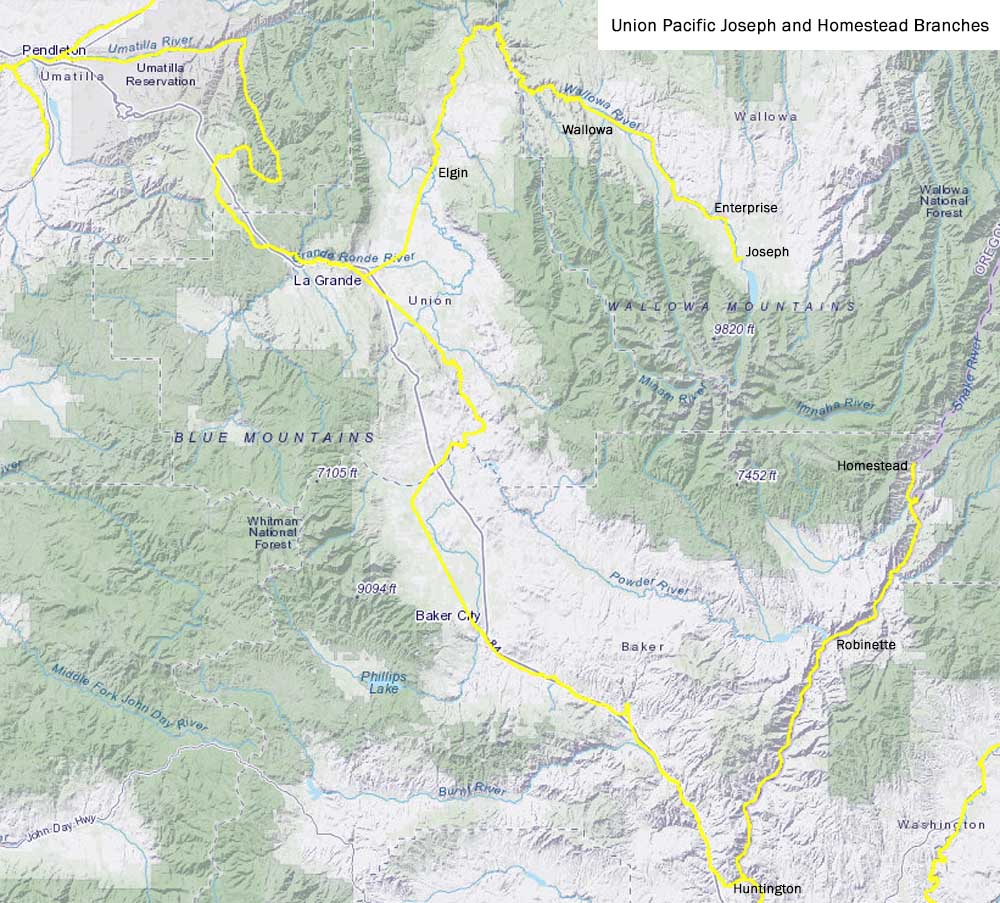|
Union Pacific Homestead Branch |
|
|
|
|
|
Homestead, Oregon was originally settled in around 1898. The town got its name because it had been built
on the homestead of a family named Pierce. Prospectors soon discovered an iron ore deposit in a nearby
mountain, and the Irondyke Copper Mining Company started work to develop that property. In 1898 the
Northwest Railway Company organized and started construction on a railroad projected from a connection
with the Oregon Short Line just east of Huntington down the Snake River to Lewiston, Idaho, but did not
accomplish much before failing. Prospects for traffic from the mine plus agriculture development got the interest of the Oregon Short Line, and after several reorganization attempts failed the OSL bought the Northwest Railway from the mining company in 1905. OSL resurveyed the line as far as Homestead, then established its own Northwestern Railroad Company subsidiary that completed the 58-mile long line into Homestead on 1 July 1910. The Homestead branch settled down to a bucolic existence of handling mostly mining and some agricultural related traffic. In 1928 the Idaho Public Utilities Commission and the Lewiston Commercial Club piggybacked on Oregon's efforts to force Union Pacific to finish Harriman's cross state railroad proposal by asking that the railroad also be forced to extend the Homestead branch north to Lewiston. The Interstate Commerce Commission turned that request down in a decision issued 6 January 1930, citing the large cost and impossible terrain through which the line would have to be built. The mine failed in 1928, after which the railroad cut the line back to Robinette. Lumber milled at a sawmill at Halfway, OR, and loaded onto railcars at Robinette supported the line until the late 1950s, when a series of dams built on the Snake River forced the final abandonment of the line. Several substantial tunnels and many miles of grade remain today, though much of the line has been inundated by the reservoirs. |
|
|
Map |
|
|